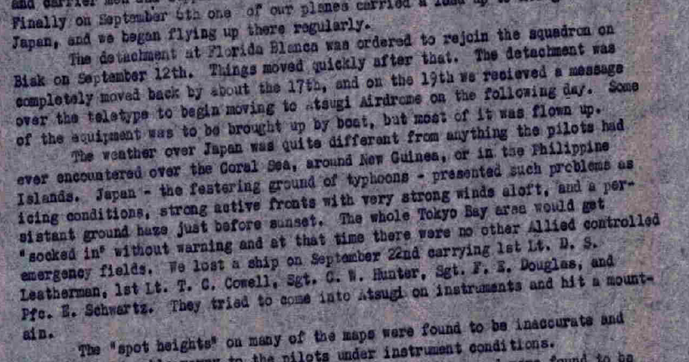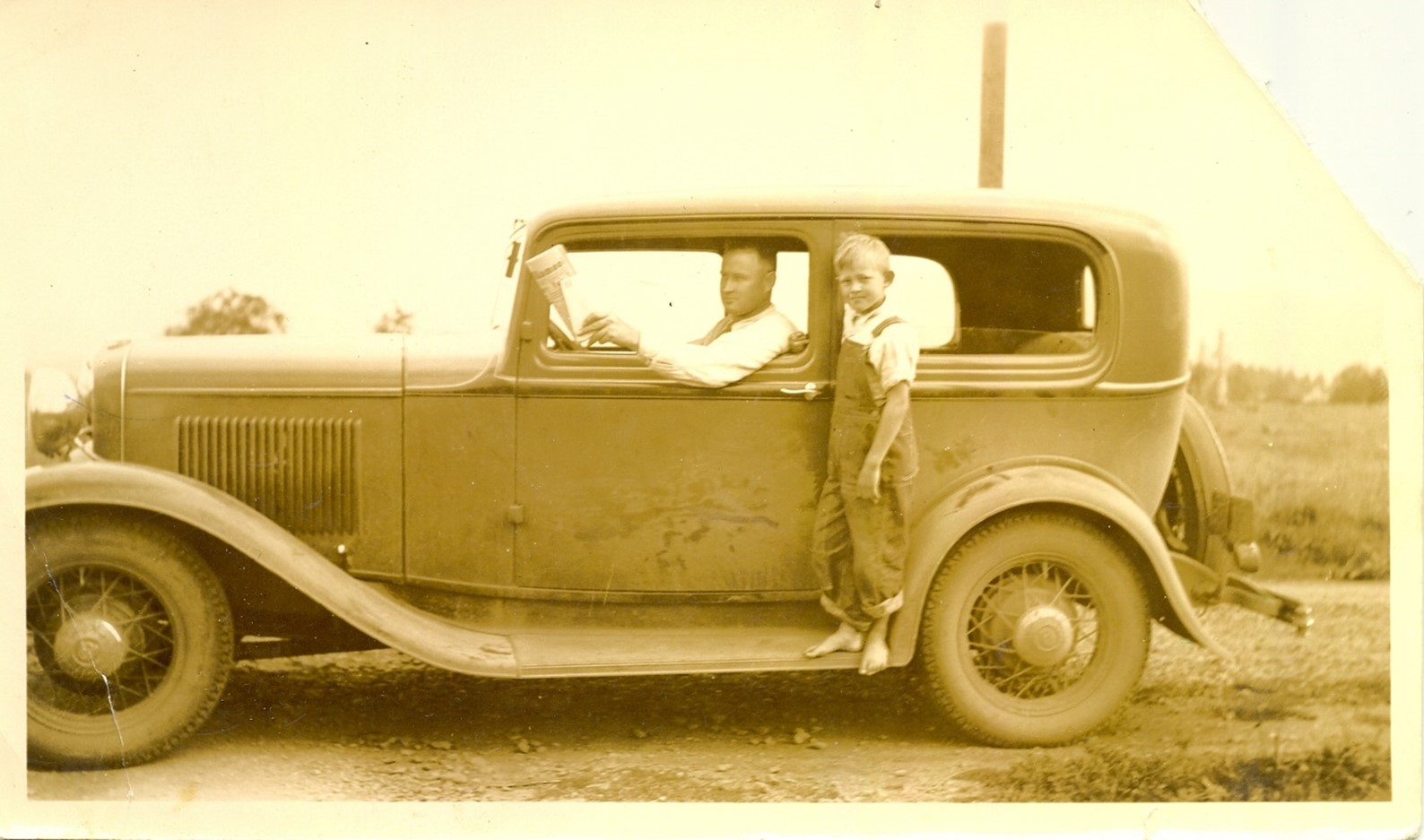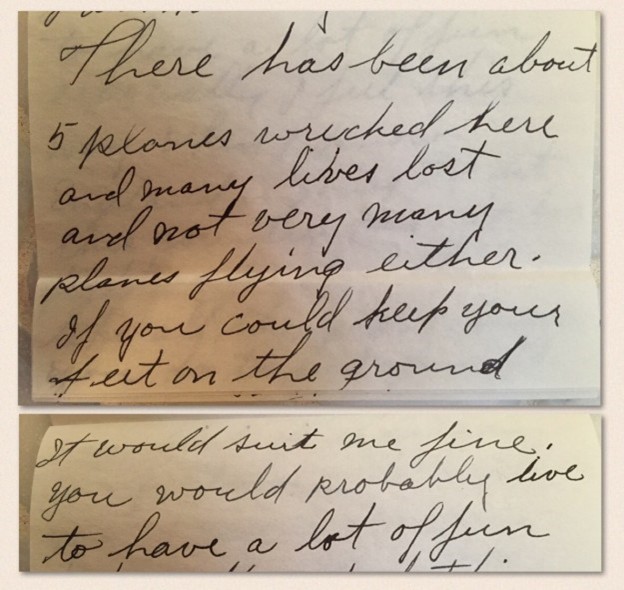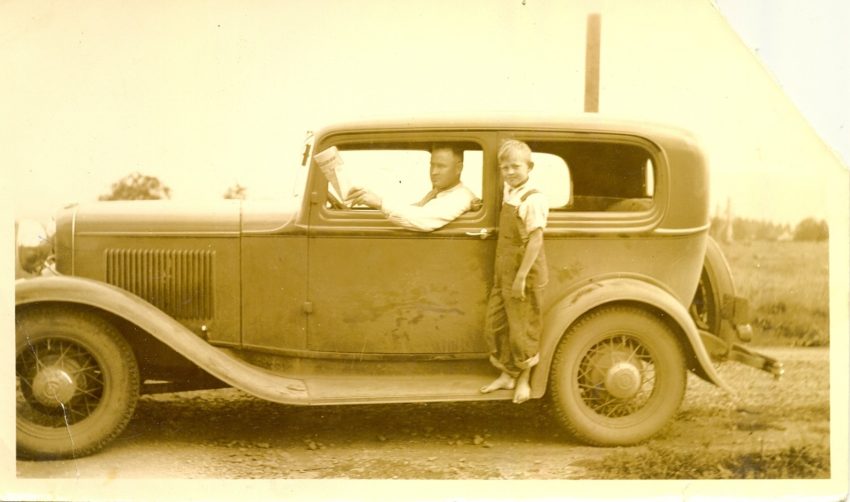EDITOR’S NOTE: There are only a few blogs remaining and we’ll we sharing them soon. We will be sharing entries from Old Tillamook Times, provided by Sandi Burgess Botten Dean, featuring Karen Kranweiss Nudelman’s blog in which she describes the search and book writing that started a little over 10 years ago when she first received “the letters” and began reading. Then came the idea for a story, then a book – “Dear Folks” tells a young man’s story through letters he wrote home to his parents in Tillamook, Oregon. Links to the introduction to the story and the series are below.
by Karen Krantweiss Nudelman
Was I really going to do this? Tear apart a heroic story looking for inconsistencies? The tale of Chuck Hunter’s tragic demise during a mission to save POWs in Japan was a known fact in Tillamook, Oregon for seventy years. What right did I have to turn it upside down?
I went back to Chuck’s own words, hoping they would tell me how to proceed. I poured over his letters for a third and fourth time. The essence of his humanity was evident on every page. He was, simply put, a genuine and earnest young man. He was effortlessly charming, engaging and sweet. I could relate to him. I decided to trust what I knew in my heart. Chuck would want to be remembered accurately. So, I set off to find the truth.
I began by calling my friend Devra, who for many years worked as a curator for the Smithsonian museums. She reached out to a colleague, senior curator at the Air & Space Museum, her friend Tom Crouch. Shortly after Tom and I began to correspond, he introduced my research project to Daniel Haulman at the Air Force Historical Research Agency (AFHRA.)
After a few days of telling Chuck’s story to new people, my head was spinning with the potent combination of joy and anticipation. I thought, “this is it! I will find out all the answers today!” In reality, there was a long road ahead but at least I was pointed in the right direction.
If you’re familiar with the experience of “hurry up and wait,” you can imagine how often I refreshed the inbox on my Outlook account. It turns out that staring at the computer screen, trying to will an email to appear isn’t very effective.
And then…it came.
Air Force Historical Research Agency
600 Chennault Circle
Building 1405
Maxwell AFB, AL 36112-6424
Ms. Nudelman:
This letter is sent in reference to your request for information concerning Sgt. Charles Hunter. I digitized the 21st Troop Carrier Squadron history and the 374th Troop Carrier Group history for September 1945.
Sgt. Hunter died when the C-46 he was on flew into a mountain moving squadron supplies, equipment and personnel from the Philippines to Atsugi, Japan.
You will receive an email with directions on how to download the files sent regarding Sgt. Hunter. If you would like copies of all the histories of the 21st TCS and 374th TCG, I enclosed an order form for them. Please fill it out and return it to the address on the sheet if interested.
If I can assist you further, please contact me. Thank you for your request, have a great day.
Sincerely,
James M. Cloninger, PhD
Historian
The memos he shared with me had a written account of the human and material losses sustained by the 21st Troop Carrier Squad in September and October 1945. Here are the excerpts regarding Chuck’s last flight:

C-46 number 8455 crashed in the Atsugi area on the 22nd September while hauling a Squadron load. The crew and passengers, seven in all, were instantly killed.

The weather over Japan was quite different from anything the pilots had ever encountered over the Coral Sea, around New Guinea, or in the Philippine Islands. Japan- the festering ground of typhoons- presented such problems as icing conditions, strong active fronts with very strong winds aloft, and a persistent ground haze just before sunset. The whole Tokyo Bay area would get “socked in” without warning and at the time there were no other Allied controlled emergency fields. We lost a ship on September 22nd carrying 1st Lt. D.S. Leatherman, 1st Lt. T.C. Cowell, Sgt. C.W. Hunter, Sgt. F.E. Douglas and Pfc. E. Schwartz. They tried to come into Atsugi on instruments and hit a mountain.
The two memos, dated October 1945 and November 1945, documented the story of a typhoon, which forced the crew to fly with little to no visibility. The crew relied solely on their instruments for navigational guidance. The weather dealt them a terrible hand. In the end, the plane was lost – on what was meant to be a routine supply run. The number crunching and administrative tone of the memos made me queasy. There were rows and columns of digits, an attempt to quantify the damage to their squadron.
Sgt. C. W Hunter was Chuck from Tillamook. Helen’s younger brother. Alice and Frank Hunter’s second child – their only son. You could try for a hundred years and never, ever be able to quantify their loss.
The sheer injustice of this accident happening one month after the war had ended was too much for me to comprehend. The truth didn’t bring me peace. I was an idiot to think that it would. I managed to capture a few racing thoughts in a follow up email:
Was this preventable? Or was his life considered expendable? How on earth did the story of his death become entangled with a POW Rescue mission, a completely different set of circumstances? Did Alice and Frank Hunter die without knowing the truth? Is it possible he took part in the POW rescue mission in any capacity?
Karen,
I can only speculate about how the POW story started. My guess is that someone connected the date of his death to the POW missions being flown…and that connection would have made the sacrifice easier to understand rather than just an accident during “normal” resupply operations. That information provided to you would have been classified, I believe, into the 1980’s or even 1990’s. His parents probably never knew…
The actual resupply missions were flown by B-29s of the 20th Bomber Command. Based on the 21st TCS history, Chuck was flying between the Philippines and Okinawa up until his flight into Japan and death. It looks like the 21st TCS flew supplies and personnel into Okinawa from Clark Airfield after the unit finished moving the 13th Airborne Division to Okinawa. It would not surprise me, speculation of course, that some of the supplies and/or personnel flown by Chuck/21st TCS ended up being part of the POW supply mission. I can’t prove that, but it would make sense.
Couple parts to answer your question… There was a strong desire to get American troops into Japan as quickly as possible. Partly as a show of force, partly to begin the demilitarization/demobilization of Imperial Japanese forces and partly to retrieve POWs in Japan. Another part to this is that in the month of September 1945 there were approximately 660 aircraft accidents in the US and approximately 260 aircraft accidents outside the US suffered by the Army Air Forces.
Flying was extremely hazardous, especially over long stretches of water. Remember that weather forecasting at that time wasn’t particularly accurate and it was pretty normal, from my readings, for aircraft to get into weather that they would normally not fly in.
James M. Cloninger Jr., PhD
Major, USAFR [AFSOC]
Air Force Historical Research Agency
Before I could step on the gas pedal and push toward my next discovery, I took a moment to absorb what I had learned. The narrative about his final mission had changed dramatically. One question was answered, but many more were born from that revelation. I decided to take a step back. I went back to my archive of Chuck’s letters and began to read. This time with a new set of eyes.
Frank Hunter, Chuck’s dad, worked as Tillamook’s only rural mail carrier. Waking up at 5:30 am, Frank’s first act was to sort the mail. Before the day was over, he would travel 70 miles and visit 500 mailboxes. When there was a spare moment, he would write Chuck brief notes – often composed on very small pieces of paper, similar in size to “Post-it notes.” He kept his stories light and entertaining, but on occasion, the tone of the letter shifted.

Frank on his mail route. A young Chuck tags along for a ride. Photo Courtesy of the Tillamook County Pioneer Museum
One short stack of notes is still adhered together after 72 years. The first page was dated October 6, 1943. I believe this letter was sent to Chuck during his training in 1943. Perhaps Chuck brought this letter back home when he visited Tillamook on furlough in the summer of 1944. Why else would a letter penned by Frank be saved along with three years’ worth of letters written by Chuck? Unless, of course, Frank never posted it.

He writes:
There has been about 5 planes wrecked here and many lives lost and not many planes flying either. If you could keep your feet on the ground, it would suit me fine. You would probably live to have a lot of fun.
Love, Pop
Here are links to the previous stories about Karen’s journey to document Chuck Hunter’s life:
OLD TILLAMOOK TIMES: “Dear Folks” – Series #8 – One typewriter, slightly damaged …
OLD TILLAMOOK TIMES: “Dear Folks” – Series #9 – September 22, 1945


